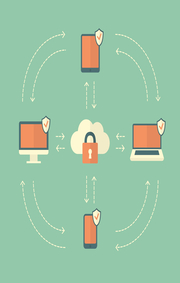Is Threads Safe for Teens?
Threads was launched in July of 2023. It’s a relatively new app from Instagram, which is owned by Meta, which was founded by Mike Zuckerberg (Facebook). For parents, it is yet another app for them to check into, as if parents needed more to be worried about.
Is the Threads app safe for kids? Are their concerns to be aware of? We’ll get into all the details, but first; let’s learn more about Threads and what was it designed for.
What is Threads?
Threads was announced as a new way to share with text. Some liken it to Instagram’s version of twitter, which is now called X. However, while X allows anyone to view their tweets, Threads is a closed social media platform. To read the content you need an Instagram user account and must be logged in. Video lengths are also longer on Threads.
Compared to Instagram, Threads is more direct and simplified. It’s more in touch with micro bloggers. It’s also better at direct messaging and sharing news with your followers. Instagram is focused on sharing photos and stories to anyone who may be online.
Is Thread Safe for Teens?
Because Threads is a text-based app, one might think it’s safer than Instagram, since it’s not driven to serve potentially rude photos. As mentioned, it’s a closed platform. But that does mean that kids won’t allow a stranger into their fold of connections. Just like most apps, users must be 13 to have their own account. Predators posing as teens can slip in and work their social engineering strategies.
Like any app, there are privacy concerns. So, not to be a broken record, but we must stress that users must ensure all the apps they sign up for are set to the strictest privacy settings. Take steps to educate yourself and your child about cyber threats that are more likely with low security settings.
And often forgotten, make sure you child under 13 has not opened any social media account and filled in an older age.
How Safe in Threads in General?
There’s nothing new here about this app compared with most other social media apps. Except that its relatively new. This means it’s not on the radar of parents who are late adopters of the latest apps kids begin using to get away from the watchful eyes of their parents.
The main thing is to ensure teens are being wise about not connecting with strangers. Teach them the basics of how scammers also infiltrate these apps to carry out cyber attacks. Beware of the potential for online harassment.
Parental controls are only as good as what is offered by an individual app. To protect your kids on Threads, you need to be also doing the same on Instagram through their parental supervision controls. Whatever is set on Instagram regarding monitoring will automatically apply to Threads.
Parental Controls for Instagram and Threads include:
- You can monitor the time your teen spends on Threads.
- Set daily limits and restrict times it can be used. This includes programming scheduled breaks.
- Keeps on eye on who they are following and who is following them.
- Within Instagram’s parental supervision you can adjust privacy settings remotely.
- You can also restrict content. This is never as effective as using a third part parental controls app but it’s better than nothing. It should filter out the worst of the worst.
- You can see who your child has blocked.
Conclusion: Quick Features Explored
The feed on Threads is not chronological and you can’t search for content on it. This is a benefit if teens are seeking out potentially harmful content. However, you can search for users and connect with them. In this way, a provocative profile pic could lead someone down the wrong path to a contact parents may not approve of.
Threads only works on mobile devices. Most kids would not use a computer anyway, but it’s worth noting.
To recap and to clear up any confusion
Threads is a different app that Instagram. Just because someone is not following your child on Instagram, they may be following them on Threads. It’s possible to have an entirely different friend group on Threads.
However, since Threads is primarily text based and a micro blogging app, it possible to have deeper connection with like minded people. This also could mean written content has the potential to be more in depth and personal. Parents should still employ the same steps to protect their child, no matter what app they are using.
Educated them about online risks, such as predators and scammers. Ensure they keep their friend groups to age-appropriate friends only. Set up the most secure privacy settings. If possible, get on threads and ask your child if you can follow them. If not, give them space and consider using a parental control app that give them privacy while allowing you to restrict and monitor activities.
Generally, Meta has done a lot better job recently to monitor and remove content on Facebook and Instagram. This applies to Threads as well. Therefore, Threads will be safer than Twitter, YouTube and many other apps that are potentially harmful to teens. as both of these platforms are known to have more inappropriate content for kids.
Resources:
Twitter parental controls
YouTube Parental Controls
Instagram and Threads Parental Supervision
Parental controls on META apps
Visit the Meta Family Center











 Explore the Safe Search Engine -
Explore the Safe Search Engine -